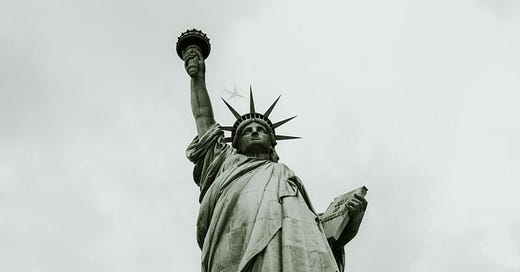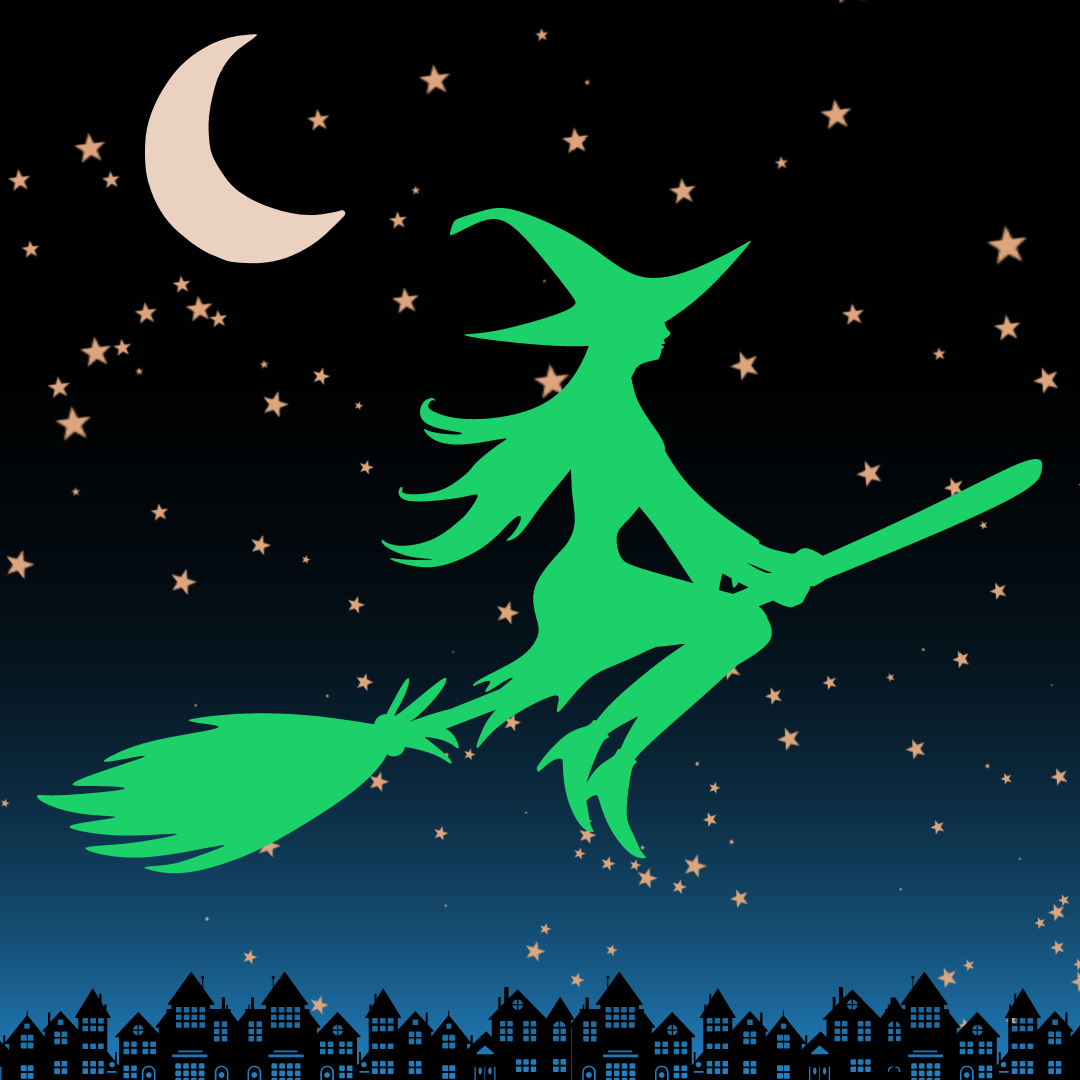There’s little overlap between movies I want to watch and movies starring Tom Cruise, but a recent read—Post-9/11 Horror in American Cinema by Kevin J. Wetmore—piqued my interest in the films of the oft-maligned aughts.
The turn toward ultra-violent, bleak narratives after September 11th was no coincidence. Happy Hollywood endings were traded in for bittersweet or downright depressing ones as Americans sought to reconcile with the realization that the world had fundamentally changed. As someone who loves a nihilistic finale, I’ve been working through some of the films in Wetmore’s book I hadn’t yet seen, leading me to the 2005 adaptation of War of the Worlds. The story follows the events of an alien invasion from the perspective of Ray, an average blue-collar New Yorker, who desperately flees the attack with his two children. The aliens, known as tripods, arrive through bolts of lightning and then rise up from the earth before razing civilization to the ground.
What started as a movie night to escape the anxiety of recent political events turned into an exploration of Steven Spielberg’s commentary on post-9/11 America. As the aliens shot laserbeams at humans, herding them together like fleeing sheep, I couldn’t help but think of the metaphorical relations between this larger-than-life invasion and the terrorism, speciesism, and colonialism that interconnect in the real world.
Terrorism
I was too young to form lasting memories of the events of September 11, 2001, but I grew up with the collective societal trauma. Just an hour outside of Manhattan, my New Jersey town was home to many commuters.1 It’s possible—likely—that some of my neighbors who took the train into the city that day never returned. Watching War of the Worlds, it’s impossible not to think of 9/11, especially during the opening destruction of New York City: the tripods’ blatant disregard for human life; the wanton destruction of buildings, roads, and people; the ashes—of organic and inorganic origin—coating survivors’ skin and clothes.
But these fictional extraterrestrial terrorists are not just invaders from a foreign land. Long ago, they buried their spacecrafts in the earth’s crust, waiting, dormant, until the right moment to return and wreak havoc. What initiated the mass destruction documented in the film, we never learn. But it speaks to the violence buried in American soil—of past acts of terror committed by humans upon others, of the blood and bodies buried under the veneer of civilized society, and of the potential for discontent to explode from the ground up into acts of domestic terrorism.
Growing up during the war on terror instilled in me not only a deep American sorrow but a fear of future catastrophes. Terrorism was a matter of if, not when. Regardless of one’s age on 9/11, terrorism waged war in American minds, resulting in extreme measures to crack down on potential insurgents. And in the fallout, activism and terrorism became conflated. Any threat to American institutions could be, and was, labeled as terrorism. Activists for causes entirely unrelated to the events of 9/11 came under fire from the government, with the passage of laws like the Animal Enterprise Terrorism Act making it a federal offense to oppose institutionalized animal abuse.
Speciesism
There’s something uniquely terrifying about things much larger than ourselves, whether they be whales, trees, buildings, or aliens. Their physical presence demands attention and offers perspective to just how small humans are. Watching War of the Worlds, I couldn’t help but be struck by the tripods’ overwhelming size and strength. They are so huge, so powerful, that one solitary human is not much different than an ant to them. Humanity is just as insignificant to the tripods as most other animals are to us. We bat them around, pluck them up from their homes, and drain them of life, then spit out the parts we don’t want, leaving bloody rivers and gore-spattered fields in our wake.
Though no animals are killed on-screen in this fictional alien attack, it’s only logical to assume that many animals perished during the annihilation. Spielberg’s tripods seem particularly focused on humans, at times disintegrating them with heat rays or grabbing them up to suck out their liquified innards like Martian vampires. The only time we see animals before the denouement is when a flock of seagulls flies toward tripods in the Hudson. The tripods seemingly pay them no mind—perhaps they’re too small to merit wasting laser energy on—and the seagulls have completely abandoned their survival instinct in order to, we later learn, munch on the organic matter on the tripods’ outer shell. This flies in the face of basic biological sense; unless an animal is starving or diseased, they will never put themselves in harm’s way for a quick bite.
The sacrificial tendencies of animals in fiction shows the misunderstanding many of us have of animals’ intelligence and autonomy. Animals are so often used as tools thrust into a yoke of oppression rather than perceived as individuals who deserve freedom.
Colonialism
For all our tanks and our bombs (and our bombs) and our guns, they had little effect on the tripods en masse. It was the bacteria in our air, water, and bodies that ultimately killed them before they could colonize Earth. In this sense, the story is both hopeful and cautionary: on the one hand, it shows that violent invaders can be brought down by their own bluster; on the other, it shows just how powerless victims are to a more ruthless force, and it was only by dumb luck that life on this planet survived at all.
The same can’t be said for nonfiction colonialism.
Rather than European colonists dying from indigenous diseases, Native Americans and North American animals suffered most. The English, Spanish, Portugese, Dutch, and French colonizers infected them, stole their homes, destroyed natural habitats, and murdered those who stood in their way.
European colonizers weren’t drawn to the western hemisphere by an insatiable bloodlust, though, but by the land, the animals, and the possibility of conquering them. Indigenous peoples just got in the way. Andrea L. Smalley writes on this topic in Wild by Nature:
“[American animals’] free-ranging presence indicated that the lands they roamed were unbounded and, most importantly, unowned…. So long as the animals remained wild by nature, Americans possessed the liberty to pursue and kill them anywhere.”
Even if indigenous tribes felt they “owned” the land and nonhuman life of the western world, their laws and customs were illegitimate to English eyes.
Neocolonialism
Today, the Western diet based on the consumption of animals represents the cyclical nature of oppression, in which killing animals kills us through modern maladies like heart disease, obesity, and many forms of cancer. Similarly, the tripods in War of the Worlds quench their thirst with earthly water and sate their hunger with human blood, ultimately killing themselves with the very things they sought to conquer.
Westerners propagate colonialist ideals in more modern ways, too. We demand African countries crack down on “poaching” to preserve the wildlife we watch on safaris or nature documentaries, yet laud developing nations for conforming to globalized, animal-based agricultural systems.2 Instead of interplanetary invaders burning the world to cinders, we continue to control other cultures by forcing them to acquiesce to our “civilized” way of life.
Pacifism
9/11 showed the weaknesses of a global superpower, and America responded with violence that rages on, decades later. That violence, fueled by a sense of disempowerment and vulnerability, infused American culture. I don’t think it’ll ever truly fade away. The carnage we enjoy in fiction isn’t meant to be emulated. It serves as a message, a lesson: the violence we inflict on others saturates our soil and our souls. Sometimes we need a little reminder of that in the form of giant aliens blasting humans to smithereens.
On my mind: Wasteland by W. Scott Poole
In college, I attended a fascinating lecture on the advent of plastic surgery after WWI. Veterans with full-body burns or missing chunks of flesh could undergo reconstructive surgery after returning from the battlefields. Poole writes about this, and more, in his book, Wasteland: The Great War and the Origins of Modern Horror. That era of history saw rapid advancements in technology—from weapons to intercontinental travel to the speedy dissemination of information—bringing the frontlines right into people’s homes. A war on a global scale with such carnage had never been seen before in human history, and it left an indelible scar on the public’s psyche, influencing Sigmund Freud, Franz Kafka, James Whale, and H.P. Lovecraft, among others.
Like Spielberg’s adaptation of War of the Worlds, some of the most famous films of that time were based on pre-WWI books—Dracula, Frankenstein, Island of Lost Souls, Dr. Jekyll and Mr. Hyde—but were reinterpreted by modern filmmakers to reflect their experiences with global trauma. Poole writes, “Horror became an outlook on life rather than a new entertainment amid the sheer number of dead.” Of particular interest to me is how the villains took on beastly, inhuman qualities, reflective of the disfigurements with which many veterans returned.
I can’t say I’m a history buff by any means, but I’m endlessly fascinated by the relationship between life and art, and how the two feed into each other. If you share that interest, I highly recommend this book!
Interestingly, in the 1938 War of the Worlds radio play, the initial invasion takes place here rather than in the city. As the attack goes on, the Secretary of the Interior calls for Americans to “confront this destructive adversary with a nation united, courageous, and consecrated to the preservation of human supremacy on this earth.”
The very existence of the word poaching signifies that hunting certain species—those we, in the Western world, determine to be important—is illegal, whereas hunting is legal and thus socially acceptable.





